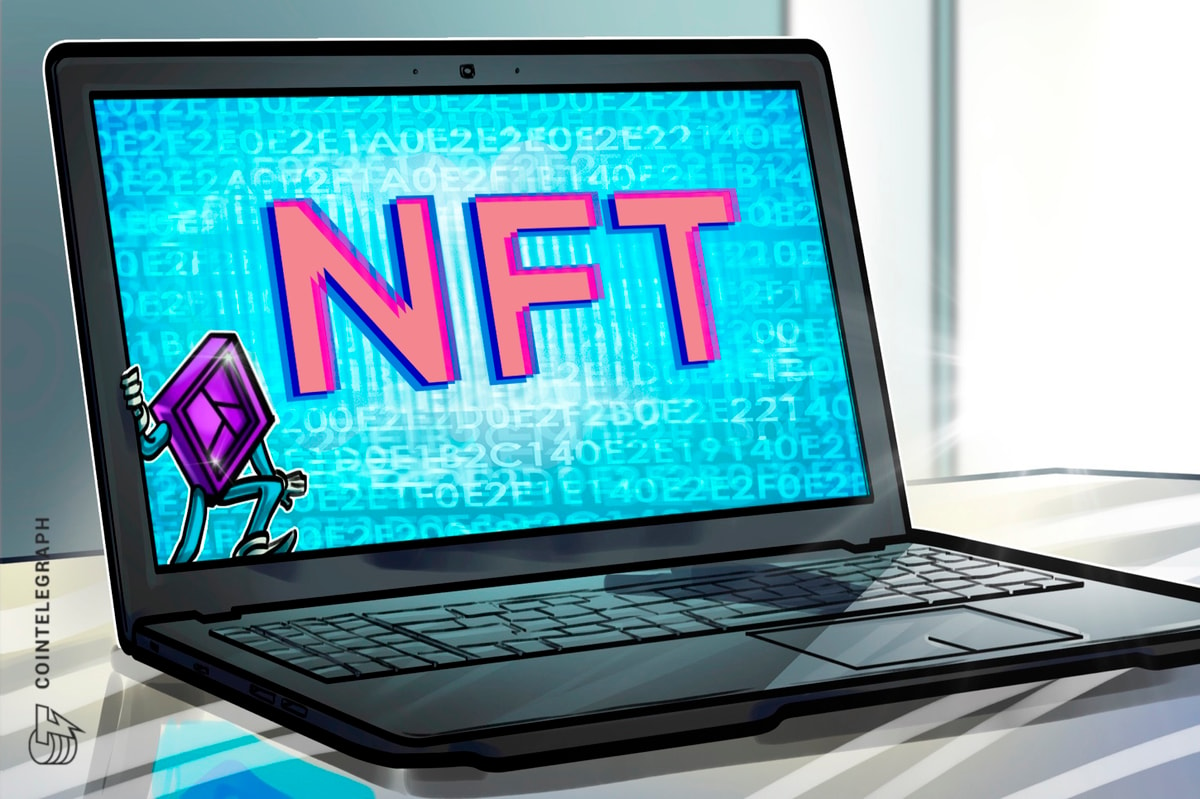
When it comes to traditional finance, crypto and blockchain leaders are faced with something of a disconnect. TradFi firms are in one sense competition, but unless TradFi comes to embrace Web3, Web3 can’t reach its full potential. Complicating efforts to reach out to TradFi are mutual feelings of uncertainty: Crypto and blockchain pioneers fear that TradFi’s influence may weaken the consumer- and transparency-first commitment industry enthusiasts value, while TradFi firms are wary of a new industry whose technology and guidelines they don’t understand.
With its long history, traditional finance is familiar to consumers and has earned widespread trust. By partnering with TradFi firms, Web3 organizations could accrue some of that positive feeling. Further, by viewing TradFi as a potential customer base, Web3 firms could begin to grow organically. From “ceasing hostilities” to spreading a wider net, there are many things crypto and blockchain leaders can do to bridge the gap between Web3 and TradFi. Below, 16 members of Cointelegraph Innovation Circle share their ideas.
Agree that there is room for everyone to build together
I frequently see those in the traditional finance industry opposing Web3 infrastructure and innovation, and vice versa. I believe that we need to adopt the mindset that there is room for all of us to build together. There is no perfect Web3 or traditional financial product that will serve every use case. Industrywide disruption happens as we build out this emerging ecosystem together. – Megan Nyvold, BingX
Work together on products to serve younger, tech-savvy investors
There’s too much of an “us versus them” narrative when it comes to Web3 and traditional finance. In reality, they’ll have to work together to meet the demands of customers in the 21st century. Crypto leaders can solve this by working together with fintechs and TradFi companies, playing to each others’ strengths to develop products and services geared toward younger, more tech-savvy investors. – Molly Glennon, Ditto
View TradiFi companies as potential clients
The first step is understanding that TradFi companies are not our enemy; they are an opportunity. TradFi users are pretty much everyone in society, and TradFi companies already have relationships of trust with these people. We in DeFi should be focused on building the tools that TradFi companies will need, seeing them as potentially our biggest clients. – Budd White, Tacen
Look for Web3 solutions that improve on current TradFi products
Web3 emulates TradFi products with global reach and the transparency of the public blockchain. If you are in TradFi, start with what you know and look for things that emulate or improve on those products. Then look at what’s different from what you know. Identify the problem that this differentiation solves. Look at who is in the value chain (and their economic incentives). This bridges the gap. – Shawn Douglass, Amberdata
Reach out to TradFi institutions to collaborate on specific solutions
Leaders in the industry could work to create partnerships and collaborations with traditional financial institutions, helping them to understand how blockchain and cryptocurrency can be integrated into their existing systems and processes. This could involve developing custom solutions for specific use cases or working to create interoperability between Web3 and traditional financial systems. – Theo Sastre-Garau, NFTevening
Bring the two industries together to establish regulations for blockchain tech and cryptocurrency
Collaborate with traditional financial institutions and regulators to establish clear guidelines and regulations for the use of blockchain technology and cryptocurrency. The development of standards for security, compliance and reporting would make it easier for mainstream investors and financial institutions to participate in the Web3 ecosystem, in turn increasing trust and confidence in the technology. – Vinita Rathi, Systango
Recognize that normal Web3 practices feel unfamiliar to most TradFi users
To onboard most nonnative Web3 users, the UX of all applications in our space needs to improve. We’re early enough adopters that switching chains and wrapping assets may feel normal to us, but it’s a foreign language to most. Web3 needs to feel more like “Web2.5” to truly turn the tide. I see some projects, like Firepot finance, putting a major emphasis on UX to further onboard TradFi users. – Ben Knaus, RillaFi
Join the community where you can transform the future. Cointelegraph Innovation Circle brings blockchain technology leaders together to connect, collaborate and publish. Apply today
Design better UIs and easier onboarding
Crypto and blockchain organizations need to provide better interfaces and user onboarding. Decentralized applications and other decentralized platforms must be extremely intuitive and user-friendly to avoid deterring retail investors. If more retail investors turn to DeFi, traditional financial institutions will be more inclined to venture into the space themselves. – Anthony Georgiades, Pastel Network
Focus on the technology’s ease of use and real benefits
Too many people are trying to force Web3 adoption at a technical level. What we need is more “Web2.5” innovation that helps bridge the gap and port people over to Web3 without forcing the issue. Pioneers can come off as too aggressive for traditional worlds; we need to lure in those traditional worlds with the ease of use and actual benefits of the technology, not through forceful sales tactics. – Brian D. Evans, BDE Ventures
Start tokenizing real-world assets
Tokenization of assets like real estate is one way to bridge the gap between Web3 and TradFi. This counters the argument that crypto assets are just “pet rocks” because these tokens can represent ownership of tangible, real-world assets like real estate, cars, watches and more. – Zain Jaffer, Zain Ventures
Be honest about what blockchain can and can’t do
Be honest with users about what they truly need for their businesses. Question how and whether blockchain is the right path and what tangible benefits it would offer. TradFi may not be perfect, but the crypto space isn’t fully matured either. Hybrid solutions that assuage user concerns about risks could also help bridge the gap. – Yaoqi Jia, AltLayer
Create clear definitions for the space
Unfortunately, there are a lot of unknowns for the people in charge of the regulatory side of Web3. We need to work harder to create clear definitions for this rapidly evolving space. Then we can begin to speak and understand the same language, which will hopefully lead to better alignment. From there, we can unlock a productive path forward and finally bridge this gap. – Matthew LaCrosse, MetaEngine
Ensure you’re compliant with regulatory guidance and policies
It comes down to one word: compliance. Regulated TradFi is not going to interact with Web3 and distributed ledger technology if it’s not compliant or if it’s not operating within the accepted bounds of guidance issued by regulators or the policy created by lawmakers. The other important thing is behaving like a company that would support a financial institution. Document your processes and procedures, and be ready to show you’re a grownup. – John Wingate, BankSocial
Openly discuss Web3’s problems and what the industry can learn from Web2
We can bridge the gap by openly discussing the problems Web3 and blockchain tech solve, the problems that hinder its growth and what we can learn from Web2 to shorten the growth curve of the industry. This way, both those in the traditional finance space and those in the Web3 space get to participate in progressive dialogue that benefits both industries. – Mohak Agarwal, ClayStack
Think globally
While crypto and DeFi in the U.S. are mired in regulatory uncertainty, blockchain leaders can continue to make inroads in other markets around the world. Institutional investors in Asia, for example, are more enthusiastic about Web3 at the moment than their counterparts on Wall Street. – Wolfgang Rückerl, ENT Technologies AG
Ensure Web3 systems integrate smoothly with Web2
Web3 and Web2 must work together to drive exponential value. The identities in Web2 — email, Okta, etc. — must map to Web3 identities such as wallets. Web3 must integrate with Web2 systems, and Web3 firms must also make sure that Web2 users have the option to pay gas fees and so on with crypto or fiat. Many traditional companies are not comfortable holding crypto on their balance sheets. – Nitin Kumar, zblocks
This article was published through Cointelegraph Innovation Circle, a vetted organization of senior executives and experts in the blockchain technology industry who are building the future through the power of connections, collaboration and thought leadership. Opinions expressed do not necessarily reflect those of Cointelegraph.
Learn more about Cointelegraph Innovation Circle and see if you qualify to join.
Read More: cointelegraph.com









 Bitcoin
Bitcoin  Ethereum
Ethereum  Tether
Tether  XRP
XRP  Solana
Solana  USDC
USDC  Dogecoin
Dogecoin  Cardano
Cardano  TRON
TRON  Lido Staked Ether
Lido Staked Ether  Wrapped Bitcoin
Wrapped Bitcoin  Sui
Sui  Hyperliquid
Hyperliquid  Wrapped stETH
Wrapped stETH  Chainlink
Chainlink  Avalanche
Avalanche  Stellar
Stellar  Bitcoin Cash
Bitcoin Cash  Shiba Inu
Shiba Inu  Hedera
Hedera  LEO Token
LEO Token  Toncoin
Toncoin  Litecoin
Litecoin  Monero
Monero  WETH
WETH  Polkadot
Polkadot  USDS
USDS  Bitget Token
Bitget Token  Pepe
Pepe  Wrapped eETH
Wrapped eETH  Binance Bridged USDT (BNB Smart Chain)
Binance Bridged USDT (BNB Smart Chain)  Pi Network
Pi Network  Ethena USDe
Ethena USDe  WhiteBIT Coin
WhiteBIT Coin  Coinbase Wrapped BTC
Coinbase Wrapped BTC  Aave
Aave  Bittensor
Bittensor  Uniswap
Uniswap  Dai
Dai  NEAR Protocol
NEAR Protocol  Aptos
Aptos  Jito Staked SOL
Jito Staked SOL  OKB
OKB  Ondo
Ondo  Internet Computer
Internet Computer  Cronos
Cronos  BlackRock USD Institutional Digital Liquidity Fund
BlackRock USD Institutional Digital Liquidity Fund  Ethereum Classic
Ethereum Classic